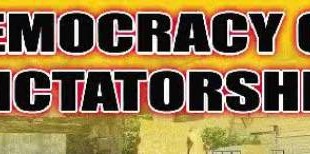This research papers aims to find out the answer to the question “how does secular education system affects religious belief of people?”. Before starting exploration of influence of secular education system to the thinking ability of religious people, we need to study the concept of ‘secularism’, ‘education’ and ‘religion’ in order to suggest answers to the question. The research will be based on content-based analysis. It will refer to theoretical approaches on these three concepts. Theoretical frameworks on these three concepts, answers to questions such as “what is secularism?” “what is secular education?”, “what is religion?” and “what is the role of secularism and religion in education?”. The paper will refer to the cases that explain relationship between education and religion such as Wisconsin v. Yoder. This case is closely related to the concepts of secular education system and its affections to religious beliefs of people.
After giving deep and clear explanation about the theoretical concepts, the question will be include circumstances in Azerbaijan education system and the religious values of its people. Firstly, concepts should be clear and understandable in order to study the same concept in one country. For that purpose, the paper will refer to the constitution and regulations of Ministry of Education of Azerbaijan Republic in order to explain the religious concept of state and education and its impact on religious beliefs of people.
Keywords: secularism education religion democracy legislation human rights
Concept of Religion
Before starting to explain education and secularism firstly, need to understand the definition of religion by answering the questions such as ‘what is religion?’ ‘how is religion defined in international sphere?’ ‘what is the role of religion in human life?’.
There are two ways of defining the concept of religion: philosophical and legal definition.[1] Philosophy suggests that there are three ways of defining religion: a metaphysical (what exists in our world), epistemological (what we know about our world and life) and ethical treatment (what is valuable for us in our world).[2] Majority of the great philosophers such as Kant, Augustine, Hegel mentions that there two fundamental elements for the existence of religion: human and belief. Belief is dependent variable that comes out by existence of human beings. Thus, a man is independent from religion. From the first existence man, ‘rational animal’, begins to question everything that is around himself, he questions existence of himself. When a human being doesn’t find a power to answer those questions he starts to formulate a belief in supernatural powers, which are invisible, untouchable and unnoticeable. Cicero, Kant, Hegel explain that with beliefs that man develops to God, he becomes bound to God. Our awareness and consciousness about God creates the concept of ‘religion’.[3]
Compared to the philosophical definition of religion, legal approaches on defining religion are still controversial in international sphere. It might be thought that defining of religion or belief was essential in the development of Article 9 in European Convention.[4] Evans argues that Article 9 of the Convention is ‘diplomatic wording’ in terms of it includes ‘thought, conscience and religion’ which means different things to different people.[5] For example, if Nazism was considered a belief under the Article 9 of Convention it was only because Article 9 is about the manifestation of religion or belief. It doesn’t apply to the right to freedom or thought and conscience.[6] However, no human rights treaty, including Convention has never defined religion or belief formally.
Concept of Secularism
The concept of secularism is mentioned as a social process not a legal concept.[7] It’s sometimes called as ‘separationism’. Separationism is defined as a separation of church from state. State becomes independent from religion, and religion is independent from state. Secularism is closely related to the French term laïcite, which is considered to be original concept of ‘modern secularism’.[8] The word laïc meaning secularism firstly appeared in the 1946 French Constitution: ‘France is a republic that is indivisible, laïc, democratic and social’. Here laïc meant to be secular state, which means that religion is separated from state.
Modern definition of secularism that is used in articles, constitutions aimed to limit freedom to manifest religion under the principle of secularism.[9] Morini in her paper argued that there are two existing forms of modern secularism: pluralist and fundamentalist. Both pluralistic and fundamentalist notions of secularism explain that religion is a ‘private issue’. Religion belongs to an individual; it doesn’t belong to the public. Therefore, certain limitations toward manifestation of religion need to be taken under the law.[10] Pluralist secularism states that religion or belief pertain to personal conscience or identity. Fundamentalist secularism presumes that because of the private concept of religion and belief, it should be kept in private places such as homes, churches and mosques. For tolerance and respect to all, religion and belief doesn’t have any place in public domain.[11]
Concept of Education
Kantian approach on education is one of the famous interpretations to understand and explain concept of education, its structure, types and goals. For Kant education has three meaning, ‘care’, ‘discipline’ and ‘ instruction’.[12] Kant describes education as a fundamental principle for human being. He mentions that without education human beings are not distinguished from animals. The same concept is given in Islamic approach to education. Al-Attas describes the nature of education in Islam close to the Kantian approach. He says that in nature man is defined as a ‘rational animal’.[13] And education is the indivisible part of man’s life. For Al-Attas there are two elements that constitute education: content and process. As man is a ‘rational animal’, content of education helps him to formulate his rationality and education as a process teaches him to obey others’ rules and rules of the nature. Education helps ‘rational animal’ to recognize himself. It gives knowledge of ‘something’, which constitutes recognition of God and recognition of himself as a creature created by supernatural power, God.[14] Returning to Kant we can notice that his concept of education is quite similar how Islam explains it. For Kant education is worthwhile and valuable formula. He also describes education as a ‘process’ and ‘content’. [15] The first nature of education is that it teaches care and instruction in people. Secondly, education develops certain characters into human beings such as discipline. Discipline helps human beings to formulate themselves and to obey the rules of humanity and live under conditions of constraints.
As there are two forms of education: civic and autonomy-based education, Kant strongly advocated for autonomy-based education because of the concepts of rationality that autonomy-based education teaches children. [16] The major goal of autonomy-based education is to develop necessary capabilities that enable citizens to make rational choices for their own preferred ends.[17] He supports the idea that education should teach children to make rationale choice and formulate their good ends themselves by those reasonable choices. However, for Kant worthwhile and valuable education should combine itself civic, autonomy-based and moral types of education, which covers all three elements of education, care, instruction and discipline that Kant suggested before.[18]
Civic goals of education are the required goals for secular public education.[19] It develops certain characters in people to enhance toleration, respect and reciprocity. Amy Gutmann concludes that education is the major principle of nondiscrimination in secular state.[20] Hence, for avoiding discriminatory society everyone must be educated. The most general application of education is that principle of nondiscrimination prevents the states and all groups from denying anyone for his religion, race and nationality.[21]
Secular education system v. Religion
Wisconsin v. Yoder case
After identifying the concept of secularism, education and religion now it’s time to refer to the influence of secular education system to religious belief of people. One of the best examples of explaining this relationship is Wisconsin v. Yoder case in the USA in 1971. The case is about the cultural and religious society of Amish people living in the USA. Wisconsin case began with the action of three fathers of children who stopped their children from attending secular public schools of Wisconsin state claiming that secular curriculum of public schools is opening the world aloof from religious values.[22] Fathers were fined for not sending their children to schools. However, in Wisconsin case the court decided on favor of Amish people concluding that “almost 300 years of consistent practice and strong evidence of a sustained faith pervading and regulating respondents’ entire mode of life support the claim that enforcement of the State’s requirement of compulsory formal education after eights grade would gravely endanger if not destroy the free exercise of respondents’ religious beliefs”.[23]
The fundamental principle of Amish people’s life is their religious beliefs in two kingdoms. First kingdom recognized by Amish people is the current world – dominant culture and social structure of society. The second and most powerful is the kingdom of God. For Amish people, member of the kingdom of God should separate themselves from the values and institutions of the kingdom of the new world and dedicate themselves to the kingdom of God.[24] Hence, for Amish people secular education system, which doesn’t have any religious room, affects religious beliefs of their children. They claim that public education prepares the child for his own life in the existing world. However, for Christian, education should train the child to live for others and to serve to God. While Amish have profound respect for the principle of separation of church and state, they are unhappy with the removal of religious education from public schools.[25]
Education system of Azerbaijan and room for Religion
According to the Constitution of the Republic of Azerbaijan Article 18, religion is separated from the state and all religions are equal before the law. Article 18 also states that state education system of Azerbaijan is secular. According to the regulations of Ministry of Education, curriculum of schools responses to the laws stated in Constitution regarding with secular education system. But as much as Azerbaijan belongs to structural separation system, there is always corporation between state and religion in the country. Majority of the population belongs to the Islam religion, but the country is enough multicultural society. When it comes to education, majority of the public schools and universities follow the secular curriculum for all. Musavat newspaper reported on 5th October 2012 about the protests held in front the Ministry of Education.[26] Majority of demonstrators were Muslims. They were protesting secular system of education and wanted freedom to hijab at schools. Head of the Abu-Bakr Mosque was one of the supporters of these protests claiming that secular curriculum is enough aloof from the religious world and at least government officials should give freedom to people to obey their religious rules and manifest it. Secular education system of Azerbaijan is not only about its secular curriculum, but also it doesn’t permit to manifest religious beliefs at schools by strong symbols such as headscarves.
Right to Education and right to freedom of Religion
Which one protects which?
International law admits that religious identity of child is determined at birth. Parents have right and interest to bring up their children under the certain religious rules they wish.[27] Right of the individuals to religious freedom is unique. The right to manifest a religion or belief is the heart of protection of freedom of religion and belief under the Convention.[28] Article 9 protects the manifestation of freedom of religion or belief. Four types of manifestation are listed in the article: to manifest religion or belief in worship, teaching, practice and observance. Worship has been given the highest status of the manifestations under the article 9. Thus, everyone has a right to manifest their religion or belief by performing worship in churches, mosques and synagogues.[29] Hence, Article 9 of Convention protects individuals manifest of religion in the form of worship privately. Evans states that the notion of observance has slightly difference meaning. Setting a place without obtaining a government permit is considered as interference to the notion of worship and observance for the Commission.[30]
But Conventions’ approach to the manifest of religion in ‘teaching’ is controversial issue. Some judges conclude that manifestation of religion in teaching in Article 9 referred to the ‘undoubtedly to religious teaching in school curricula or in religious institutions’. It has nothing to do with secular education system.[31] In most cases such as in Dahlab v. Switzerland, Leyla Shahin v. Turkey manifestation of religious beliefs in teaching and education system is considered to be ‘rape of the beliefs of others’. Hence, paragraph 1 of Article 9 protects the freedom of religion and its manifestation in public or private places in forms of worship, teaching, practice and observance, paragraph 2 limits the manifestation of religion, which is stated in paragraph 1. Article 9 (2) tries to balance competing interests of between individual’s freedom to manifest a religion or belief. [32] By putting notion of secularism to the structure of government, to its education states refer to the second paragraph of Article 9, which means ‘limit manifestation of religion for protection of others’ beliefs’. Considering that secular education system was created in order to prevent competition of different cultures, to establish respect and tolerance in the multicultural society. It’s widely accepted that secular education system protects right to freedom of religion by putting limitations to manifestation. However, it still stays controversial that whether secular education system protects right to freedom of religion or not, as it has no room for manifestation of religious beliefs of people. How secular education system affects religious beliefs of people if it doesn’t have any permission is still under question. However, cases such as Wisconsin, Dahlab and Leyla Shahin illustrates that secular public education has great negative impact on religious beliefs of people because of the limitations that education system puts on exercising right to freedom of religion.
By: Zeynab Abdullayeva
[1]Reshad Ibadov, “Defining Religion: Necessity in Liberal Education” (2013), p 1
[2] Reshad Ibadov, “Defining Religion: Necessity in Liberal Education” (2013), p 1,2
[3] Reshad Ibadov, “Defining Religion: Necessity in Liberal Education” (2013), p 4-12
[4] Carolyn Evans, “Freedom of Religion under the European Convention on Human Rights”, (2001)
p 51
[5] Carolyn Evans, “Freedom of Religion under the European Convention on Human Rights”, p 61
[6] Carolyn Evans, “Freedom of Religion under the European Convention on Human Rights”, p 56
[7] Rashad Ibadov, “Secularism” (2013), p 1-5.
[8] Rashad Ibadov, “Secularism” (2013), p 4
[9] Claudia Morini, “Secularism And Freedom of Religion: The Approach of the European Court of
Human Rights” (2010). Israel Law Review, 43(03), p 617-618.
[10] Claudia Morini, p 617
[11] Claudia Morini, p 618
[12] Rashad Ibadov, “Education; The Concept, Aims and Types of Education” (2013), p 3
[13] Al-Attas, The concept of education in Islam (1980). Muslim Youth Movement of Malaysia. p 3,4
[14] Al-Attas, The concept of education in Islam (1980). Muslim Youth Movement of Malaysia. p 8
[15] Rashad Ibadov, “Education; The Concept, Aims and Types of Education” (2013), p 4
[16] Rashad Ibadov, “Education; The Concept, Aims and Types of Education” (2013), p 3
[17] Rashad Ibadov, “Education; The Concept, Aims and Types of Education” (2013), p 6
[18] Rashad Ibadov, “Education; The Concept, Aims and Types of Education” (2013), p 12
[19] Rashad Ibadov, “Education; The Concept, Aims and Types of Education” (2013), p 18
[20] Amy Gutmann, “Undemocratic Education” in Philosophy of Education: Major themes in the
Analytical Tradition. p 34
[21] Amy Gutmann, “Undemocratic Education” in Philosophy of Education: Major themes in the
Analytical Tradition. p 35
[22] Tomas J. Meyers, “Education and Schooling” in The Amish and the State (2003), edited by Donald B.
Kraybill. p 101
[23] Tomas J. Meyers, “Education and Schooling” p 101
[24] Tomas J. Meyers, “Education and Schooling” p 102
[25] Tomas J. Meyers, “Education and Schooling” p 104
[26] Musavat, “Freedom to Hijab”, (2012), http://musavat.com/news/son-xeber/shimshek-kimi-aksiya_134114.html (Last visited: 20.12.14)
[27] Anat Scolnicov, “The right to religious freedom in International Law” (2011), p 166
[28] Carolyn Evans, “Freedom of religion under the European Convention on Human Rights”, (2001)
p 103, 132
[29] Carolyn Evans, p 107
[30] Carolyn Evans, p 107
[31] Carolyn Evans, p 109
[32] Carolyn Evans, p 133
 Oval Useful news from Azerbaijan and Caucasus
Oval Useful news from Azerbaijan and Caucasus


